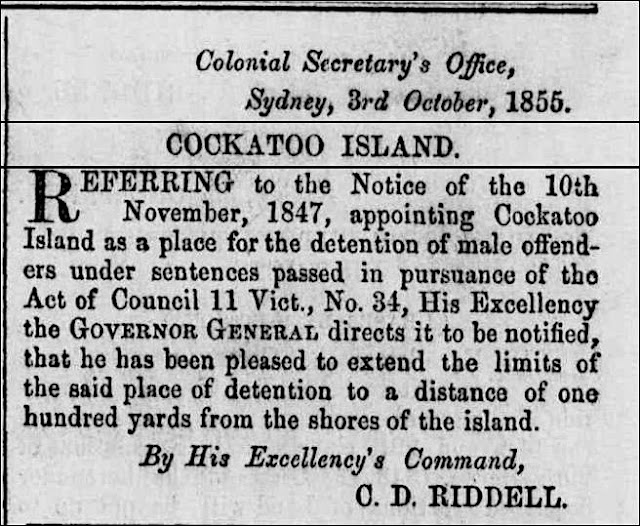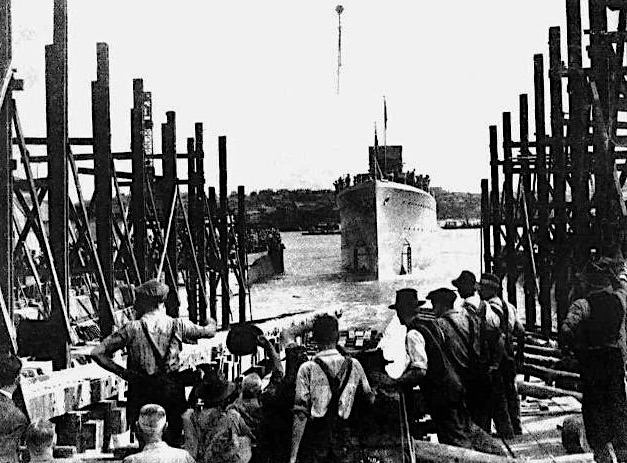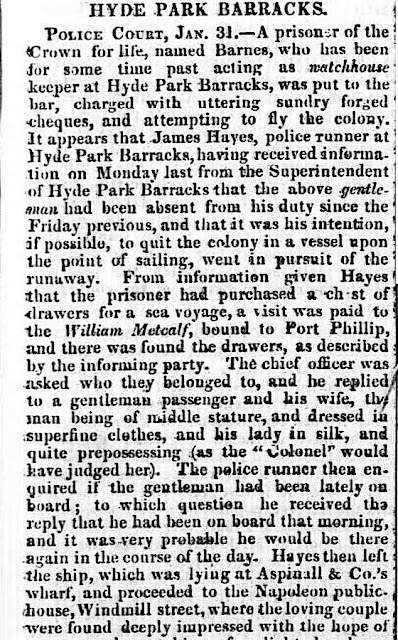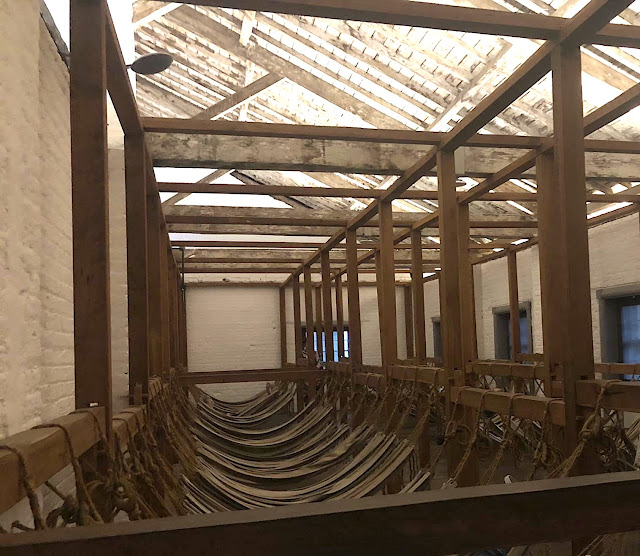 |
| Arriving at Cockatoo Island, Sydney, NSW |
Before Europeans arrived, Cockatoo Island ( Wa-rea-mah) may have been used by Aboriginal people.
From 1839 to 1869, the isalnd became a gaol where convicts suffered brutal conditions and punishing work.Governor Gipps, in 1839, due to uncertain grain supplies, began silo construction on the Island.
The site has the remains of an underground isolation cell for convict punishment.
Cockatoo Island Convict Site
Australian Convict Sites
Convict transportation to New South Wales ended in 1840.
Biloela House, was built c.1841 as a superintendent's residence, designed by Colonel George Barney.
In 1863, Frederick Ward, a bushranger, alias "Captain Thunderbolt", sentenced to ten years' hard labour on the island for moving stolen horses, managed to swim to shore and head north.
From 1871, the prison building became an industrial school for girls and a reformatory. After the girls left in 1888, the buildings became a prison again until about 1909.
The Fitzroy Dock was built to service Royal Navy ships on the island and completed in 1857.
In 1869, prisoners were transferred to Darlinghurst Gaol.
Following Federation, in 1913, Cockatoo Island became the Commonwealth Dockyard.
A underground tunnel was built during WWI to move workers and materials from one side of the island to the other.
Cockatoo Island closed as a dockyard in 1991.
Accomodation on the island includes self-contained houses, apartments, and camping grounds.
Cockatoo Island is open daily, and there is no admission charge.
Visitors can have picnics, barbecues, visit the cafe, walk about, and take an audio or guided tour.
Sydney Ferries services Cockatoo Island on its Woolwich/Balmain ferry route and Parramatta RiverCat route.
During World War II, Cockatoo Island's dockyard played a significant role in ship repair.
After WWII, the dockyard (now known as Vickers) also introduced submarine facilities.
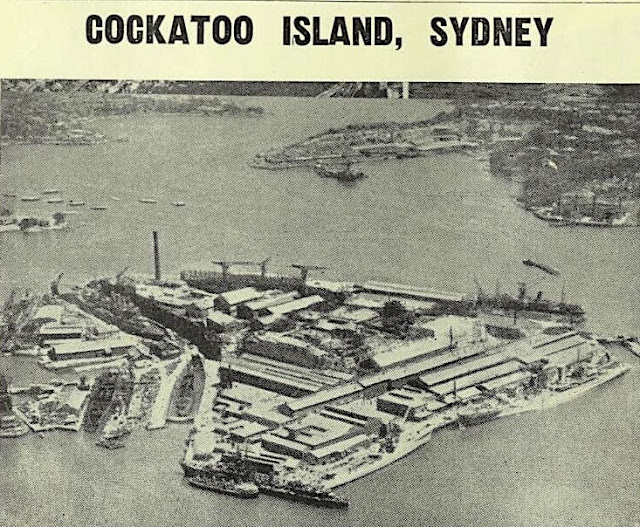 |
| Cockatoo Island, NSW, Building, lighting and engineering. (December 24, 1953) |
The island is a 10-minute ferry ride from Circular Quay.
Accomodation on the island includes self-contained houses, apartments, and camping grounds.
The movie X-Men Origins: Wolverine was filmed on the island in 2008.
The island is used as a venue for private events.
Visitors can have picnics, barbecues, visit the cafe, walk about, and take an audio or guided tour.
Sydney Ferries services Cockatoo Island on its Woolwich/Balmain ferry route and Parramatta RiverCat route.
 |
| Wooden boat, dry-docked, Cockatoo Island, NSW |
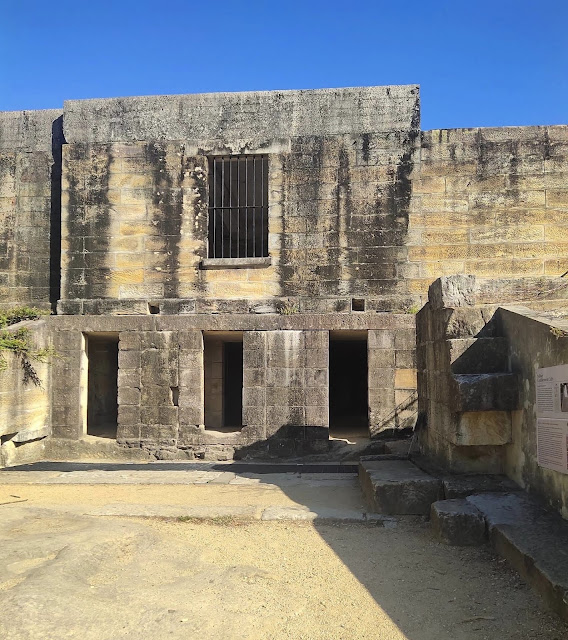 |
| The convict-built structures are mainly on the plateau area, Cockatoo Island, NSW |
 |
| The convict-built structures are mainly on the plateau area, Cockatoo Island, NSW |
 |
| The convict-built structures are mainly on the plateau area, Cockatoo Island, NSW |
 |
| The convict-built structures are mainly on the plateau area, Cockatoo Island, NSW |
 |
| Camping at Cockatoo Island, NSW |
More Info

